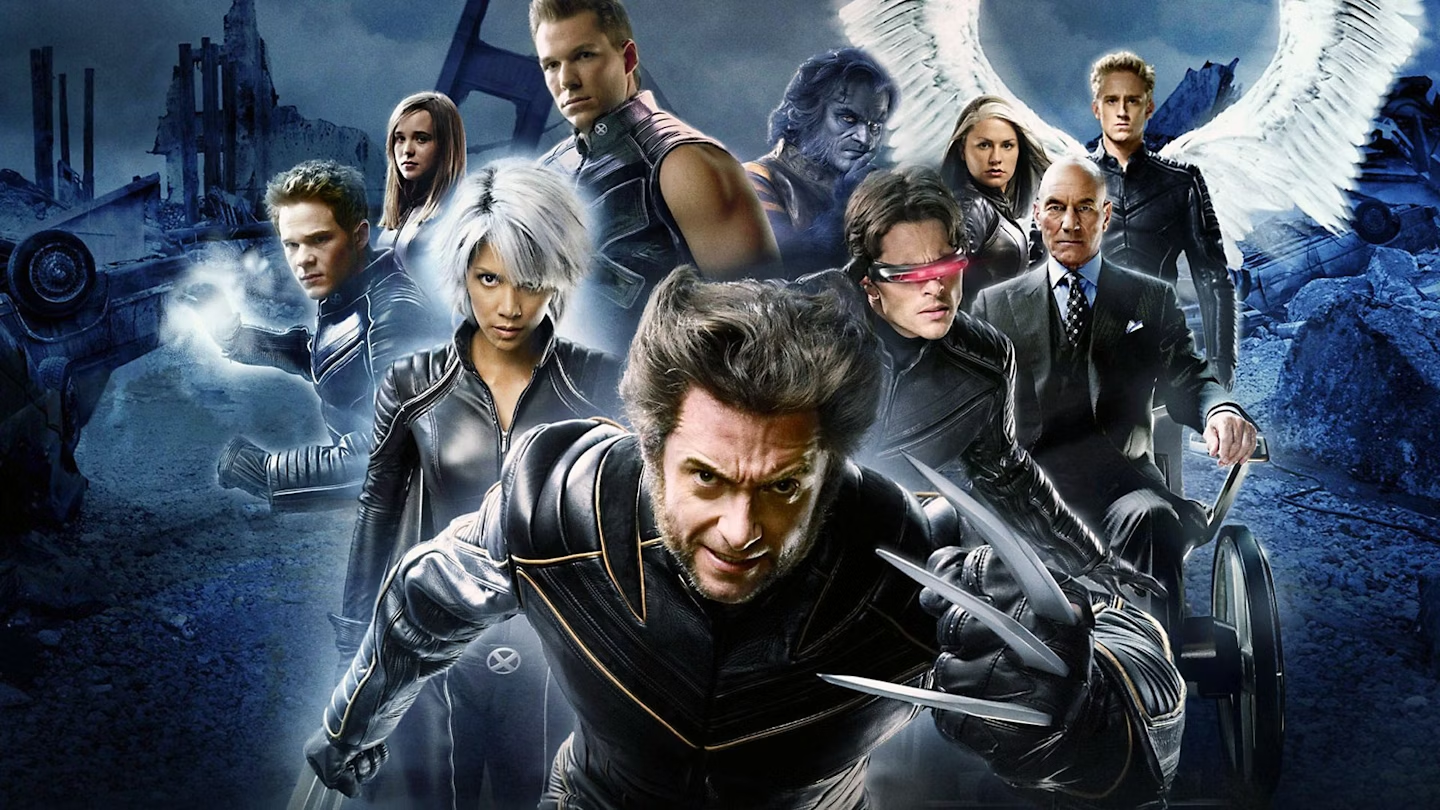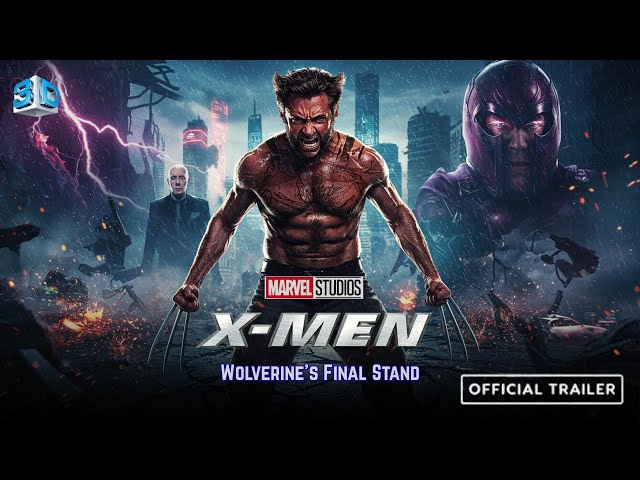X-Men: The Last Stand 2 (2026)

X-Men: The Last Stand 2 (2026)
Starring: Gal Gadot | Hugh Jackman | Dwayne Johnson
The mutant saga continues with X-Men: The Last Stand 2, thrusting the world into chaos where power and betrayal collide in ways that challenge both heroes and humanity itself. Set years after the events of the previous installment, the film opens with the world divided: governments have finally developed a “cure” to suppress mutant abilities, promising normalcy but igniting fear, resentment, and rebellion. Mutants who have hidden their powers must decide whether to embrace humanity or resist a system determined to control them. This uneasy tension sets the stage for an epic narrative that blends high-stakes action with complex moral dilemmas.
At the center of the storm is Jean Grey. Portrayed with haunting intensity, she succumbs fully to the Phoenix Force, a cosmic entity of unimaginable power. Unlike before, the Phoenix is no longer a latent threat—it has fully merged with Jean’s consciousness, amplifying her emotions and abilities beyond comprehension. Her transformation is visually stunning, with sequences that capture both the beauty and danger of her growing power: skies crackling with energy, cities trembling under psychic waves, and manifestations of fire and energy reflecting her inner turmoil. Jean is no longer just a hero; she is a force of nature, unpredictable and devastating, and her descent forces every X-Man to confront what they are willing to sacrifice for the ones they love.
Hugh Jackman returns as Wolverine, embodying both ferocity and heart. Wolverine’s journey in this sequel is intensely personal. As the line between ally and adversary blurs, he grapples with the possibility of losing friends and confronting enemies who were once comrades. His adamantium claws and unbreakable healing factor remain indispensable, but it is his emotional resilience, his loyalty, and his willingness to confront impossible odds that truly define his heroism. Scenes of Wolverine engaging in high-stakes combat—often against overwhelming numbers or foes enhanced by the cure—are choreographed with brutal elegance, combining visceral action with storytelling that reflects his inner struggle.
Gal Gadot’s character adds a new dimension of strategic brilliance and moral ambiguity. As a mutant leader determined to protect her kind, she must navigate political machinations, fractured alliances, and the consequences of unchecked power. Her presence underscores the stakes of leadership: decisions made in the heat of crisis can save lives or doom entire communities. Gadot’s portrayal brings both poise and intensity, demonstrating that survival in this world requires more than physical power—it requires intellect, empathy, and the courage to make impossible choices.
Dwayne Johnson enters the conflict as a formidable new mutant ally, whose strength and charisma complement the existing team. His arrival shifts the balance of power, introducing both hope and tension. The team must learn to integrate his abilities into their strategy, while also grappling with the inevitable friction that arises when strong personalities and powers collide. Johnson’s physical presence is awe-inspiring in battle, from devastating ground-shaking attacks to dramatic aerial maneuvers, but the narrative emphasizes that true heroism is not measured solely by strength.
The film’s plot is a masterclass in escalating tension and ethical complexity. Magneto, ever the radical visionary, advances a plan to assert mutant supremacy over humanity. With governments cracking down and the cure becoming a weapon of control, Magneto’s influence grows, and his ideology resonates with disillusioned mutants. The X-Men must contend not only with the sheer power of their adversaries but also with questions of loyalty, morality, and the cost of compromise. Friendships fracture under pressure, alliances shift unexpectedly, and the once-clear distinction between hero and villain becomes increasingly murky.
Visually, X-Men: The Last Stand 2 is a spectacle of epic scale. From crumbling urban landscapes to desolate mutant sanctuaries, the cinematography captures both grandeur and intimacy. Battle sequences are cinematic marvels, blending practical effects with cutting-edge CGI to portray mutant abilities in breathtaking detail. Telekinetic waves shatter buildings, magnetic fields bend steel and glass, and fiery manifestations of the Phoenix ripple across the environment, creating a visceral sense of danger. Each action scene is meticulously staged to emphasize stakes, character choices, and the impact of power unleashed.
The emotional core of the film lies in the relationships between the characters. Love, loyalty, and betrayal drive the narrative forward, giving weight to every confrontation. Wolverine’s interactions with Jean Grey are particularly poignant, combining history, regret, and hope. The Phoenix’s presence amplifies these stakes, as she becomes both a threat and a symbol of the uncontrollable consequences of power. Other X-Men, both returning and new, must wrestle with their own identities and responsibilities, questioning what it means to be a hero in a world that fears and misunderstands them.
The cure itself introduces fascinating narrative complexity. Mutants who take the cure face profound physical and emotional changes, raising questions about autonomy, identity, and ethics. Some embrace it willingly, seeking safety or acceptance, while others resist, willing to fight for the preservation of their abilities at all costs. This moral tension threads throughout the story, creating conflict that is as intellectual and emotional as it is physical. The film’s exploration of freedom versus control, personal choice versus societal pressure, gives depth to what might otherwise be a straightforward superhero tale.
As the climax approaches, the Phoenix’s power reaches apocalyptic proportions. Cities burn, psychic storms tear through landscapes, and mutants and humans alike must choose sides in a battle that will determine the future of both species. Wolverine leads daring rescue missions, strategic strikes, and direct confrontations with Magneto’s forces, while Gadot and Johnson coordinate resistance and protect those caught in the chaos. The combination of large-scale destruction and intimate personal stakes ensures that every moment resonates with both spectacle and emotional gravity.
The final sequences deliver a resolution that is both devastating and hopeful. Jean Grey’s struggle with the Phoenix reaches its zenith, forcing the X-Men to make impossible decisions. Lives are lost, alliances are reforged, and the balance between power and responsibility is tested. The narrative closes with a sense of hard-won survival and the lingering question of what it truly means to wield extraordinary power. Friendships are forever changed, heroes are tempered by sacrifice, and the world emerges altered, scarred, and uncertain, setting the stage for future stories.
X-Men: The Last Stand 2 succeeds in blending thrilling action, complex character dynamics, and philosophical depth. The film balances breathtaking visuals with nuanced storytelling, ensuring that audiences are engaged emotionally as well as viscerally. It redefines the stakes of the X-Men universe, proving that the battles fought are not only external but internal, and that the true fight is often against fear, prejudice, and the consequences of unchecked power.
The performances are uniformly strong. Hugh Jackman delivers Wolverine with intensity and heart, Gal Gadot embodies leadership and moral complexity, and Dwayne Johnson brings both physical prowess and charisma to his role. Together, the ensemble cast creates a web of relationships, conflicts, and alliances that enriches the narrative and deepens the audience’s investment. Direction, visual effects, and musical scoring work in harmony to produce a cinematic experience that is both thrilling and emotionally resonant.
Ultimately, X-Men: The Last Stand 2 is a story of survival, morality, and the consequences of power. It challenges the audience to consider what it means to be human—or mutant—when the line between hero and villain is blurred. It is a film that captivates with spectacle, engages with ethical complexity, and leaves viewers contemplating the nature of sacrifice, loyalty, and the enduring struggle for justice in a world that fears what it cannot control.
Rating: 8.7/10










